The Marvels of Ancient Roman Aqueducts: Engineering Mastery That Stood the Test of Time
Ancient Roman aqueducts stand as towering symbols of Rome's advanced engineering and architectural prowess.
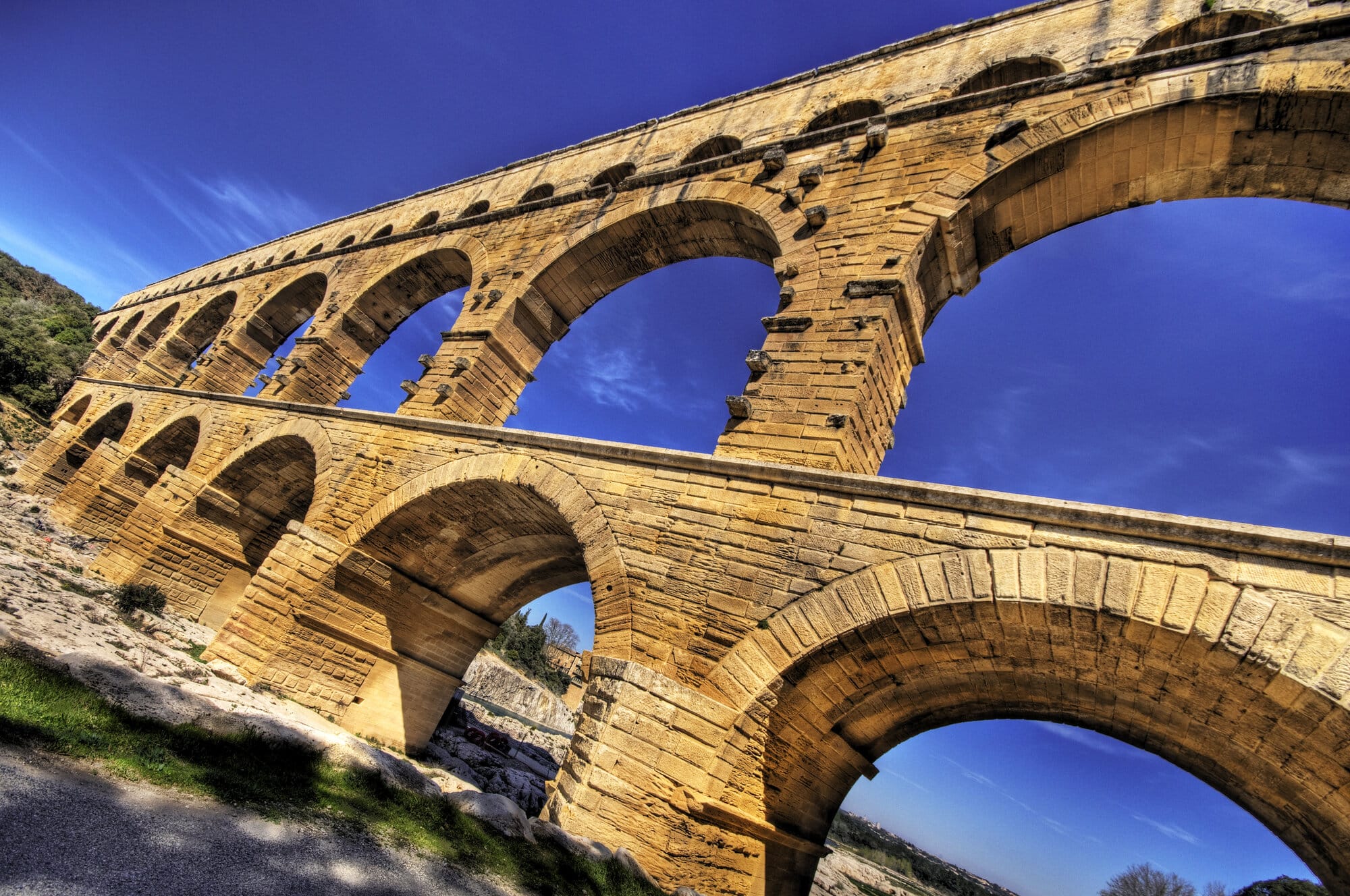
An aqueduct was the standard method for transporting water from its source to the location where it was required, whether for irrigation or city use. Our knowledge of aqueducts primarily comes from two types of sources: archaeological evidence and literary accounts. The key literary sources are Vitruvius’ Book VIII and Frontinus’ De Aquaeductu.
Vitruvius is not always entirely reliable on technical matters, and his explanations can sometimes be unclear, ambiguous, or obscure, especially concerning siphons. Much of his material likely came from Hellenistic sources, and scholars have even questioned how proficient he was in Greek.
Nevertheless, since his work is the only surviving ancient text on architecture and related subjects, it has often been treated with great respect, particularly by Renaissance architects, though it does not always merit such reverence. Modern scholarship, especially from an engineering perspective, tends to approach his writings with a more critical eye.
Frontinus, who speaks with the authority of someone who held the position of curator aquarum (overseer of Rome’s waterworks), provides the most comprehensive and reliable evidence, though his account has several limitations. (Aqueducts. Handbook of Ancient Water Technology, by A.Trevor Hodge)
The Aqueducts of Rome
Rome, at its zenith, was a city with a great demand for water, supporting opulent gardens, grand fountains, public baths, and residential amenities like running water and sewage systems. Its industries, thriving on water for machinery and production, served a population between half a million to one million. So aqueducts supplied public baths, latrines, fountains, and private households; they also supported mining operations, milling, farms, and gardens.
The Source of Life
It is widely accepted that ancient Rome had eleven major aqueducts constructed between 312 BC and AD 226, along with several minor ones, possibly numbering between eight and twelve. However, the evidence for most of the minor aqueducts is limited, leaving their details somewhat uncertain.
The first major aqueduct was built in 312 BC, and the last was constructed around AD 200. Some of these aqueducts remained functional beyond the fall of the Roman Empire and were used well into the Middle Ages, with parts still in use today. The sheer volume of water supplied by the aqueducts is one of Rome's most remarkable achievements. While we have several estimates of the total amount of water delivered, Frontinus encountered difficulties in measuring it accurately, discovering that the aqueducts supplied more water than official records suggested.
"Now there were, in the aggregate, 12,755 quinariae set down in the records, but 14,018 quinariae actually delivered; that is, 1,263 more quinariae were reported as delivered than were reckoned as received."
This significant discrepancy required further investigation. Initially, the inquiry only added to the confusion.
"Accordingly, I first undertook measurements of the intakes of the conduits and discovered a total supply far greater- that is, by about 10,000 quinariae- than I found in the records."
(The aqueducts of ancient Rome, by Evan James Dembskey)
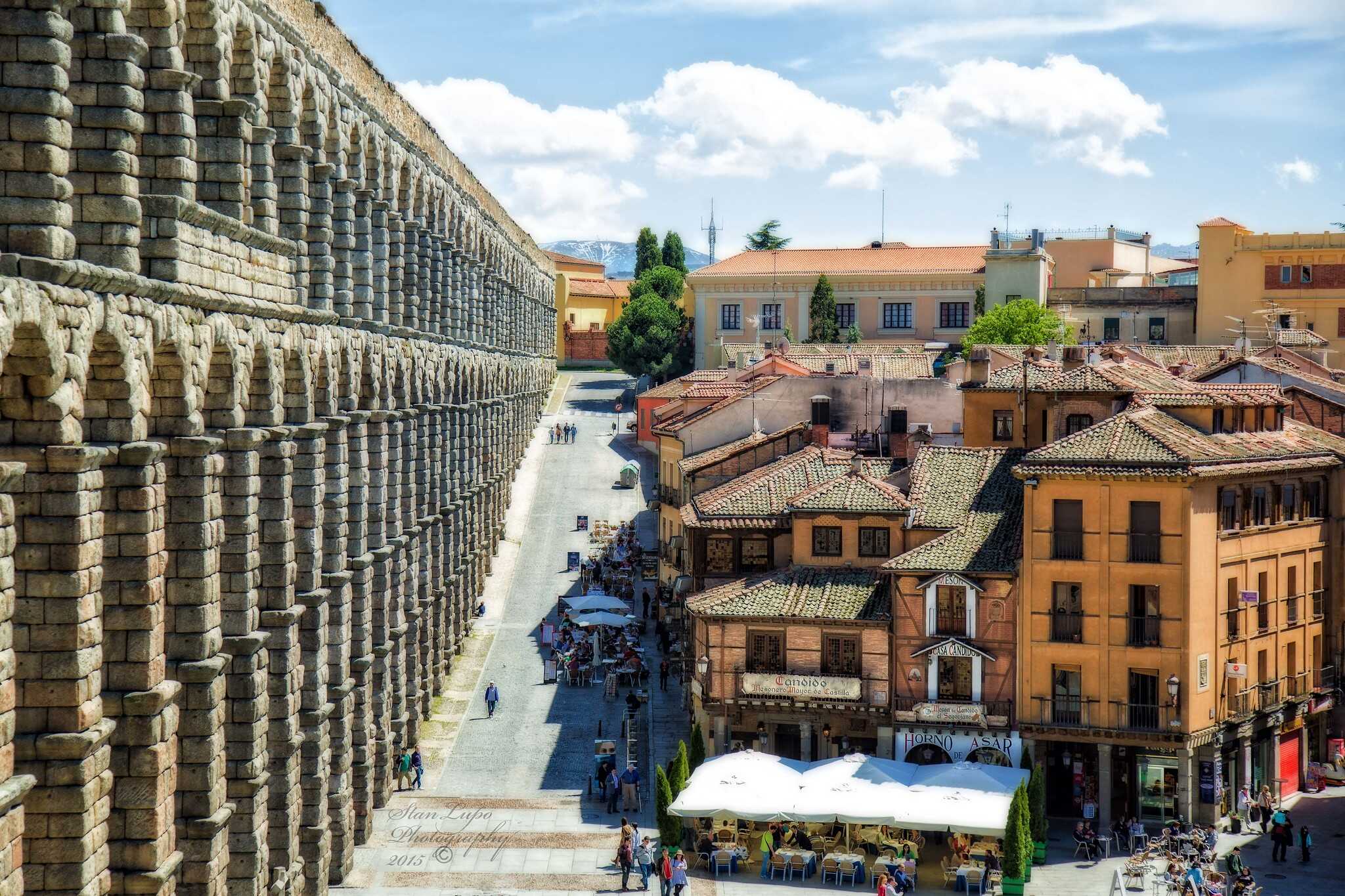
Main uses of Roman Aqueducts
Aqueducts were primarily constructed to meet the public health and sanitation needs of towns and cities, serving public fountains, baths, thermae, toilets, and latrines. They were always built after the towns were established, indicating that they were not the original source of drinking water.
Aqueduct water was also used in sewer systems and to help combat fires. Additionally, some aqueducts were constructed for irrigation and to supply certain industries, such as silver and iron mines in the Western Alps or the Barbegal water mill near Arles. Other channels were built for draining lowlands and swamps, such as the Fucine Lake in Italy. Large urban drains, like Rome's Cloaca Maxima, were constructed with techniques similar to those used in aqueducts.
Aqueducts also symbolized the power and wealth of Roman civilization. Their construction was a massive undertaking, sometimes carried out by the military under the supervision of hydraulic engineers. Financing came from the Emperor, the community, private citizens, or a combination of these sources. The costs were extraordinary, especially considering the relatively modest flow rates (less than 0.4 m³/s). The large aqueducts of Rome cost an average of 2 to 2.5 million sesterces per kilometer.
During the Augustan period, one sesterce was equivalent to 1/336 of a pound of silver, translating to a cost of approximately US$ 0.5 to 0.6 million per kilometer based on silver's price of US$ 0.18 per gram. In comparison, the 70 km Tarong water pipeline in Australia, with a flow of 0.9 m³/s, cost about US$ 100,000 per kilometer in 1994. (The hydraulics of Roman aqueducts: what do we know? Why should we learn?, by Hubert Chanson, Professor in Civil Engineering, The University of Queensland, Australia)
“Rome’s greatness rested on three wonderful achievements: aqueducts, roads, and the sewage system.”
Diogenes of Halicarnassus
Rome’s Greatness
While the concept of aqueducts wasn't a Roman invention—preceded by Assyrian, Greek, Egyptian, and other civilizations—the Roman aqueducts distinguished themselves through their scale and architectural magnificence. Their designs often featured elevated bridges to traverse valleys and urban spaces, with some still operational today, a testament to their enduring legacy over two millennia.
Pliny the Elder, in his Naturalis Historia, characterizes Rome’s aqueducts as a “marvel” that was “unsurpassed”. He writes:
“If we only take into consideration the abundant supply of water to the public, for baths, ponds, canals, household purposes, gardens, places in the suburbs, and country houses; and then reflect upon the distances that are traversed, the arches that have been constructed, the mountains that have been pierced, the valleys that have been levelled, we must of necessity admit that there is nothing to be found more worthy of our admiration throughout the whole universe” (1857, 353 to 354).
As an example, the Baths of Caracalla in Rome had a dedicated aqueduct, the Aqua Marcia, delivering an astonishing 18.5 gallons per second. This supply was stored in a massive cistern divided into 18 sections, holding a total of 80,000 cubic meters, allowing water to circulate through the baths and then drain off into the Tiber via a large underground system.

The aqueducts of Rome have been extensively studied by both ancient and modern scholars, particularly by civil and hydraulic engineers. These structures have been examined from both engineering and archaeological perspectives, with Frontinus, the Curator Aquarum under Emperor Trajan, being one of the earliest to write about them.
While architectural writers have often neglected them or dismissed them as outside the architectural domain, aqueducts do exhibit key elements of architectural design, such as symmetry, proportion, and decorative details. Early Roman aqueducts from the Republican era were built with carefully cut stone, featuring piers, arches, and string courses to break surface monotony, and were embellished with mouldings.
Later, during the Empire, decorative elements such as patterns in colored stone and brick mouldings were introduced. The aqueducts provide valuable insight into Roman architectural techniques, demonstrating the dry stonework of the Republican period and the stone or brick-faced concrete of the Empire.
Unlike Roman structures built for pleasure, which drew on Greek decorative influences, aqueducts were purely functional and relied on Roman principles of symmetry, proportion, and simple embellishments. As such, they stand as some of the most authentically Roman architectural achievements, characterized by their structural honesty and simplicity, without the pretensions of columns or ornamental entablatures.
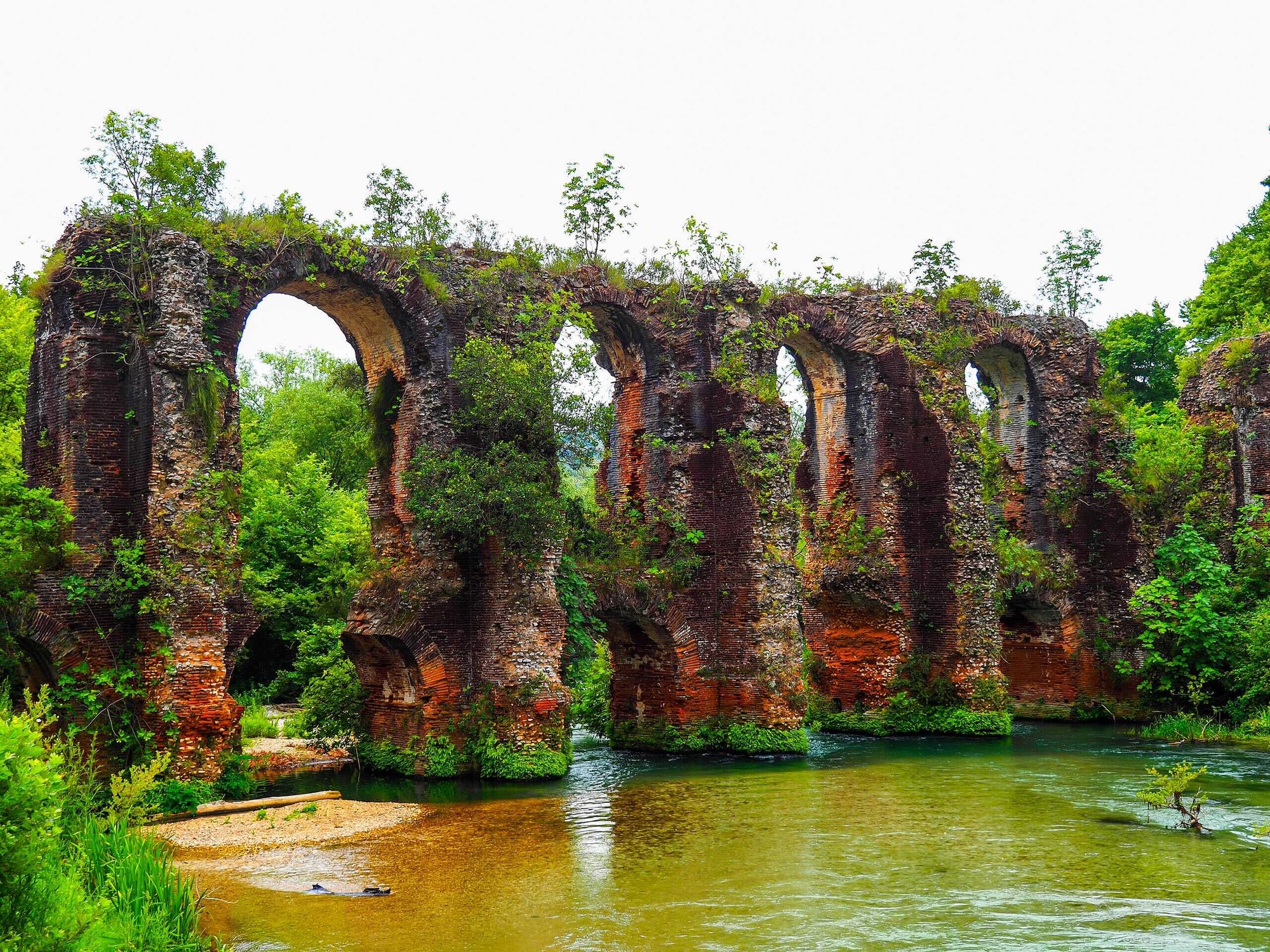
How did Roman Aqueducts Work?
Roman aqueducts were ingeniously designed to utilize gravity, allowing water to flow from mountain springs and lakes down to cities and towns. This required meticulous planning, surveying, and land management to ensure the water moved at an optimal speed—too fast, and it would erode the structures; too slow, and the water would stagnate.
Aqueducts facilitated water transport exclusively through gravitational force, utilizing a gentle downward slope in their stone, brick, concrete, or lead conduits to dictate flow speed. Typically, these channels were underground, adhering to the land's natural contours, avoiding mountains by detour or tunnelling.
While the iconic stone arches of aqueducts like the Pont du Gard in France are visible above ground, much of the Roman aqueduct system lay hidden beneath the earth. These subterranean networks, comprising complex tunnels and pipes, ensured the delivery of fresh water to urban centers, with some systems extending underground for the majority of their length.
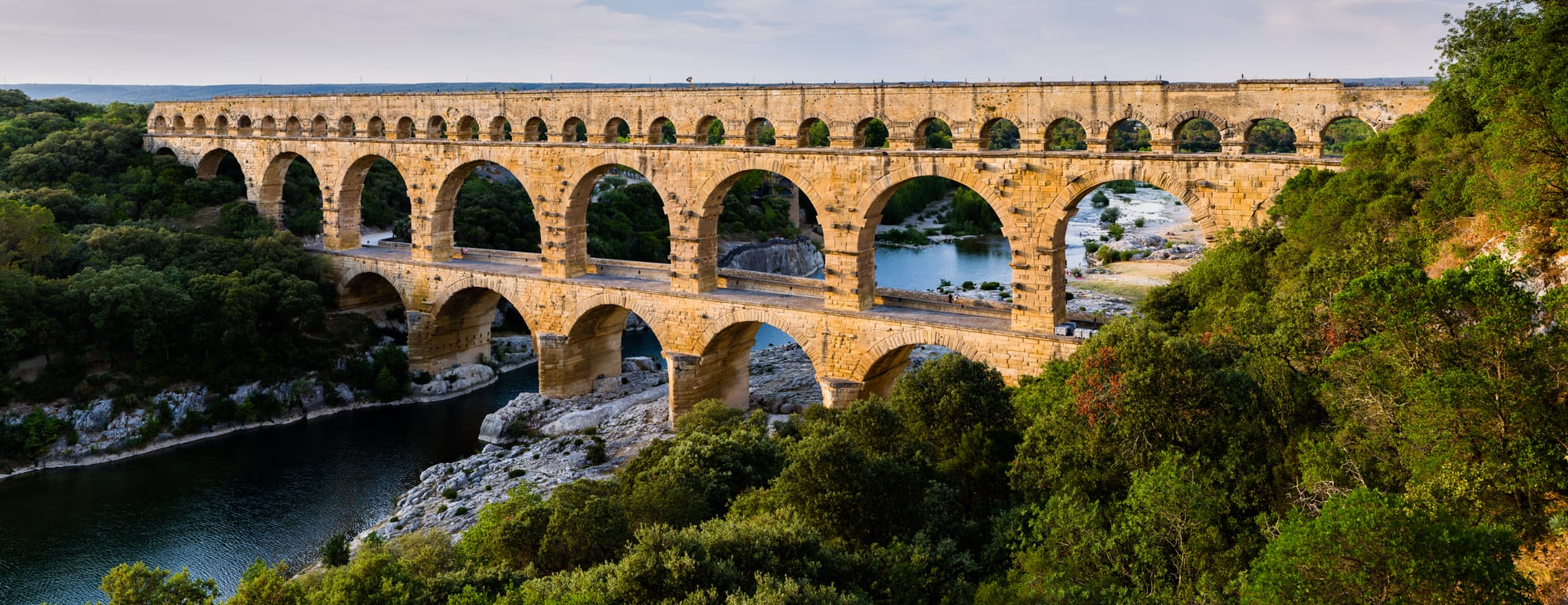
In areas where valleys or low terrains presented obstacles, the aqueducts were supported by bridges, or water was pushed through siphons made of lead, ceramic, or stone under high pressure. To purify the water, sedimentation tanks were often part of the system, trapping debris. Water flow to various destinations was controlled by sluices, distribution tanks (castella aquae), and valves, with excess water directed into cisterns for temporary storage.
“...of all things that have existed in the world, aqueducts are the most marvelous.”
Pliny the Elder
How were the Aqueducts Designed and Operated?
The construction of an aqueduct was a monumental task, designed by experienced military hydraulic engineers. Key professionals included the aquilex (hydraulics and hydrology engineer), architectus (survey engineer and design architect), and librator aquae (civil and hydraulic engineer).
Building an aqueduct required hundreds of workers and could take several years, such as 3 years for the Anio Vetus in Rome, 14 years for the Aqua Claudia and Anio Novus, and 15 years for the Nîmes aqueduct.
The costs, were immense.
The Romans used three main types of conduits: open channels (rivi per canales structiles), lead pipes (fistuli plumbei), and earthenware pipes (tubuli fictiles). Open channels, constructed in masonry or carved into rock, used gravity to transport water, while lead pipes were used in pressurized systems like inverted siphons. Although little is known about the specifics of Roman hydraulic engineering, recent studies on aqueduct hydrology and engineering reveal a high level of expertise among Roman engineers.
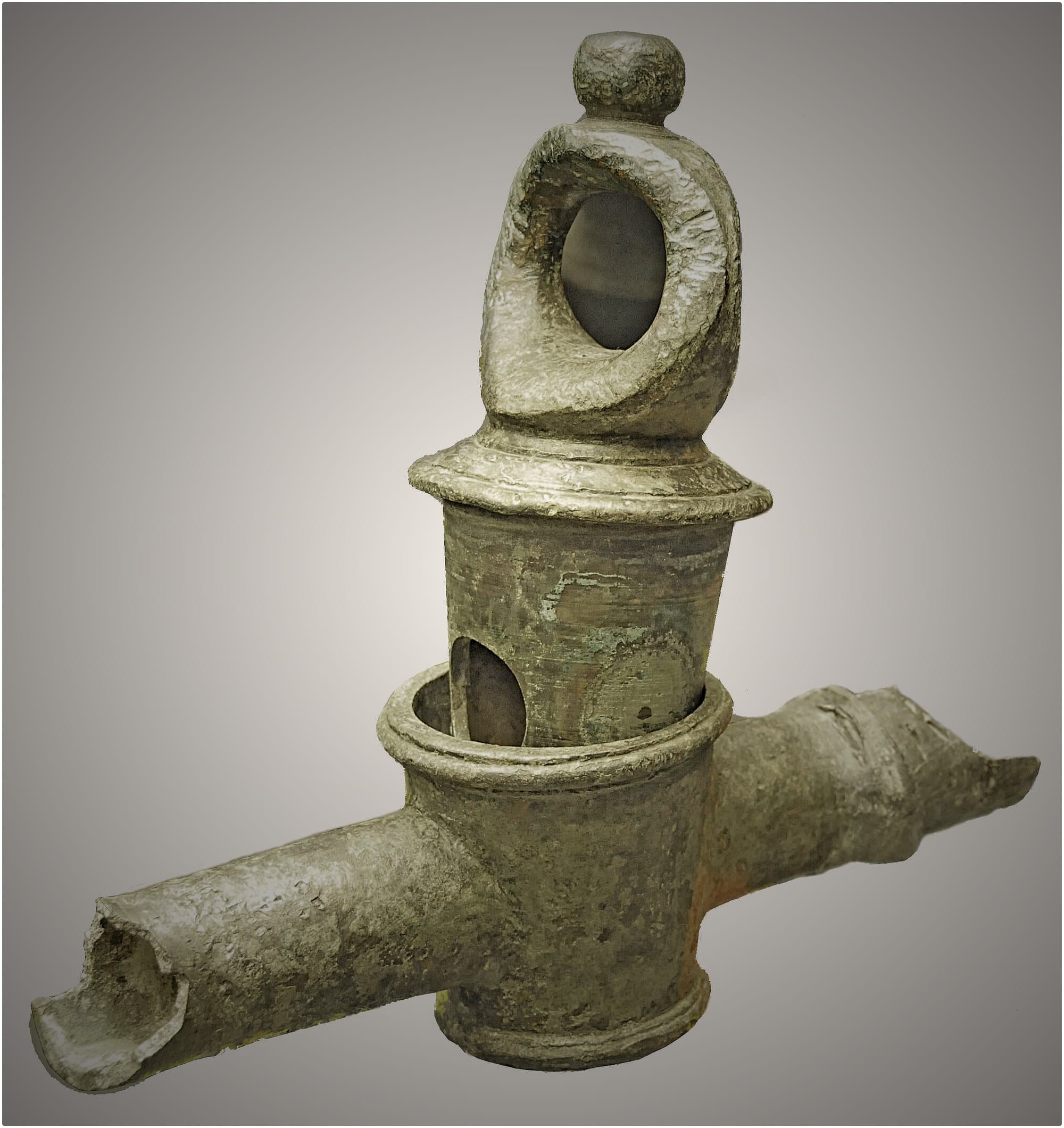
Pure water sources, typically from distant hills at a significant elevation above the city, were carefully selected. Untouched springs, free from surface or agricultural contamination, were directed into stone or brick channels known as specus.
These channels, ranging in height from 4 to 6 feet depending on the volume of water, were constructed from masonry and lined with a durable cement called opus signinum. Since the Romans lacked iron pipes and their lead and terracotta pipes couldn’t withstand high pressure, masonry channels were essential.
To cross valleys, they built arches, sometimes two rows high, allowing the water to travel on a level plane. This prevented excessive pressure at the bottom of valleys, which would otherwise cause frequent bursts and lead to costly repairs. As Pliny noted, they leveled the valleys to avoid this issue.
When faced with mountains or hills, they tunneled through, sometimes reinforcing the tunnels with stone or brick, while in solid rock no additional facing was needed. Bends were incorporated into the aqueduct every mile to reduce water force, and air vents called lumina were placed every 240 feet to admit air, facilitate water flow, and relieve pressure if the channel became too full.
Along the aqueduct route, there were many piscinae and castella—reservoirs and filtration points. The remains of these structures are scattered across the hills and countryside, often misidentified by those unfamiliar with their purpose. For instance, a large one at Tusculum, built by Hadrian, has been mistakenly called the Villa of Cicero. These piscinae demonstrate that the Romans understood the principle of water finding its own level, and they varied in size, with some having four chambers and others as many as twelve. Several such reservoirs can still be found within the city of Rome. (The Roman aqueducts and fountains, by Russell Forbes)
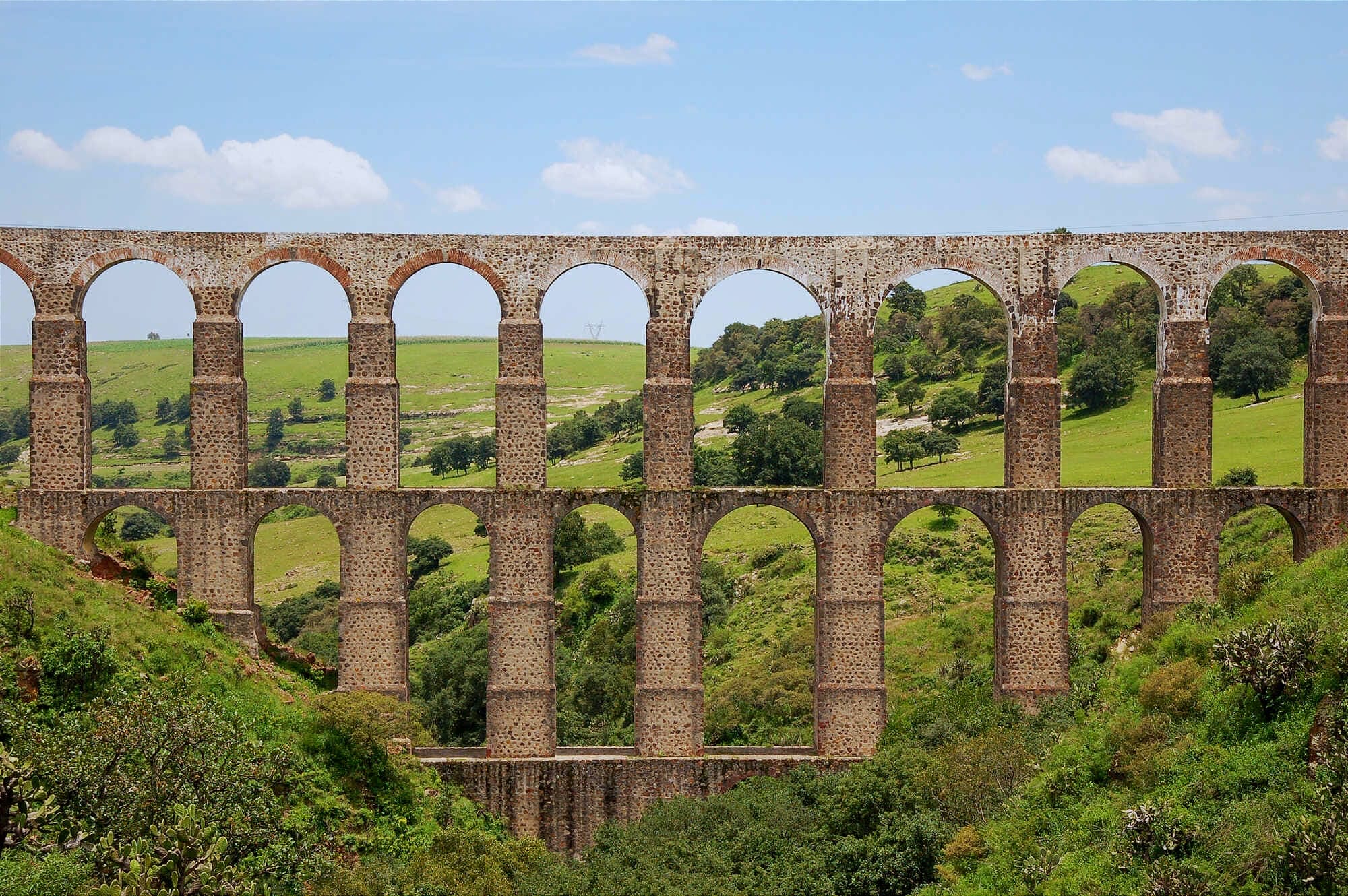
The Intricate Operation
Although Roman aqueducts are often associated with their grand arches and arcades, the most common form was a surface channel. These channels were made of masonry, typically built 0.5 to 1.0 meters underground and covered. The bottom and sides were lined with waterproof cement.
Aqueducts were large enough to allow human access for maintenance, with dimensions determined by this need rather than by water flow. For example, the Aqua Marcia was 0.9 meters wide and 2.4 meters tall. Hard water from springs often deposited layers of sinter in the aqueducts, which needed to be removed to prevent blockages. The Roman aqueduct in Nîmes, France, accumulated 0.46 meters of sinter in about 200 years.
Frontinus emphasized the importance of maintaining the aqueducts, and hundreds of slaves were employed for this purpose. During Claudius' reign, 460 workers were involved in tasks such as overseeing, maintaining reservoirs, inspecting the water lines, and repairing structures. Although the cost of materials and labor was high, it was offset by revenues from selling water rights. The water flowed entirely by gravity, and in cases where the terrain was uneven, bridges, viaducts, tunnels, or siphons were built to maintain the flow. A famous example is the Pont du Gard, which consists of three tiers of arcades reaching a height of 49 meters.
The aqueduct at Lyon included a siphon made up of nine lead pipes stretching over 16.6 kilometers. Roman lead pipes, typically about 0.27 meters in diameter, were widely used in hydraulic engineering to withstand water pressure. Upon reaching Rome, the water would flow into a castellum (settling tank) for distribution via pipes, with flow controlled by bronze nozzles called ajutages.
Frontinus documented 25 standardized sizes of these nozzles, and water flow was measured in units of quinaria. Though the Romans lacked the means to measure flow velocity accurately, they used relative discharges based on pipe area.
The large volume of water entering Rome daily required an extensive drainage system, including the Cloaca Maxima, a major sewer predating the aqueducts by several centuries. Though the Romans did not invent sewers, they expanded and improved earlier systems. The Cloaca Maxima, initially a drainage channel, was begun by King Tarquinius Priscus in the 6th century BC and completed by his grandson, Tarquinius Superbus. It was later covered in the 2nd century BC, after having served as an open canal for several hundred years.
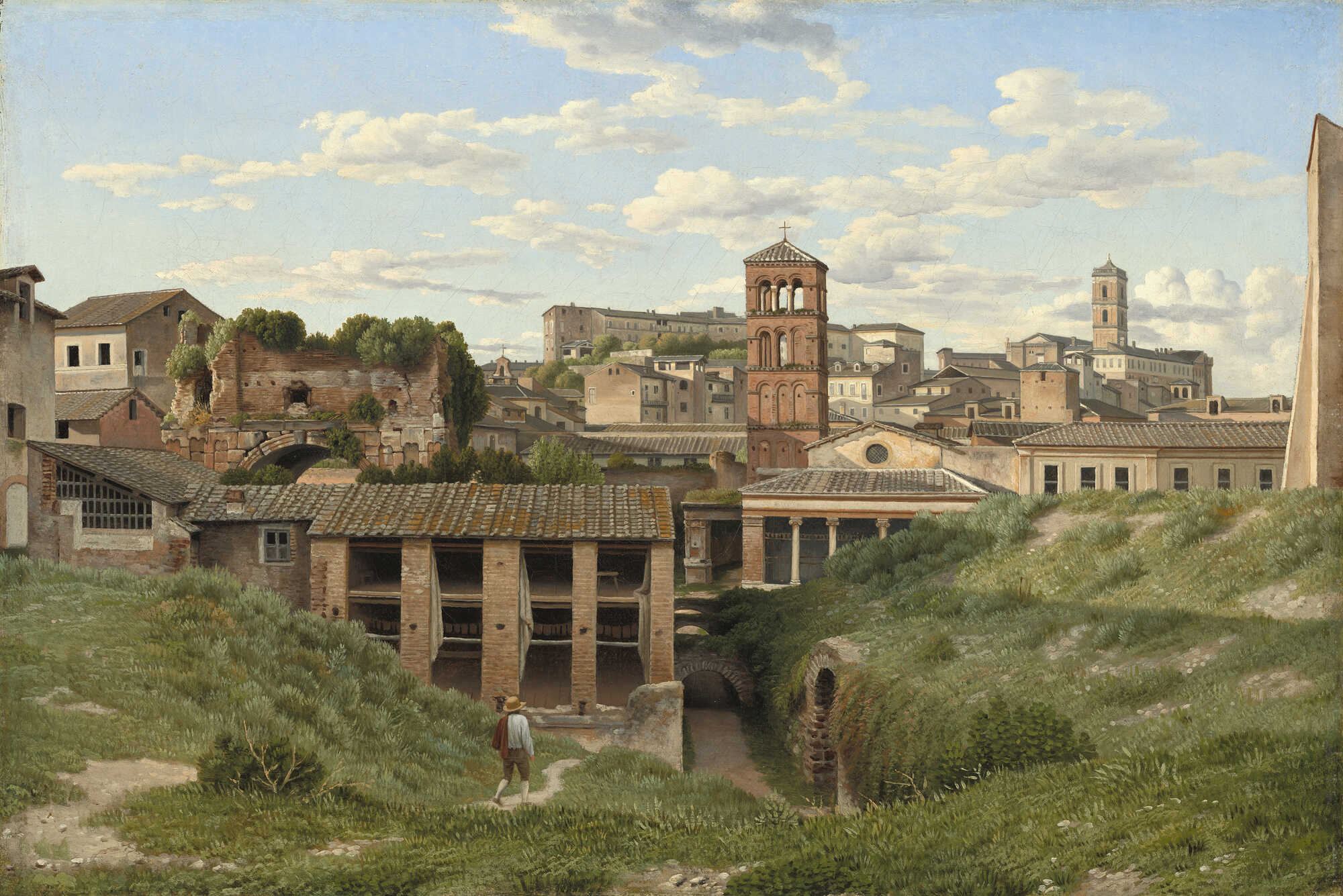
In ancient Rome, most people lived in insulae (apartment buildings) rather than in private homes (domus). A fourth-century AD record shows that for every 26 blocks of apartment buildings, there was only one private house. Even senators often rented rooms in apartment buildings.
However, almost none of these insulae had water supply systems or connections to sewers. The poet Martial, complained about the lack of water in his home, despite a nearby fountain, stating that his "dry house" wasn't refreshed by even "the slightest shower." If an apartment building didn't have a well or cistern, residents had to collect water from the nearest public fountain.
Although it wasn't illegal to connect to the public sewers, technical issues made it impractical. Since Roman plumbing lacked gas traps, connecting to a sewer could expose residents to unpleasant odors and the dangers of hydrogen sulfide and methane explosions. (The Aqueducts and Water Supply of Ancient Rome, by David Deming)
Materials that Lasted Millennia
The durability of Roman aqueducts can be attributed to the materials used in their construction: a combination of stone, brick, and a special volcanic cement called pozzolana. This material, alongside the employment of scaffolding similar to what is used today, contributed to the longevity of these structures.
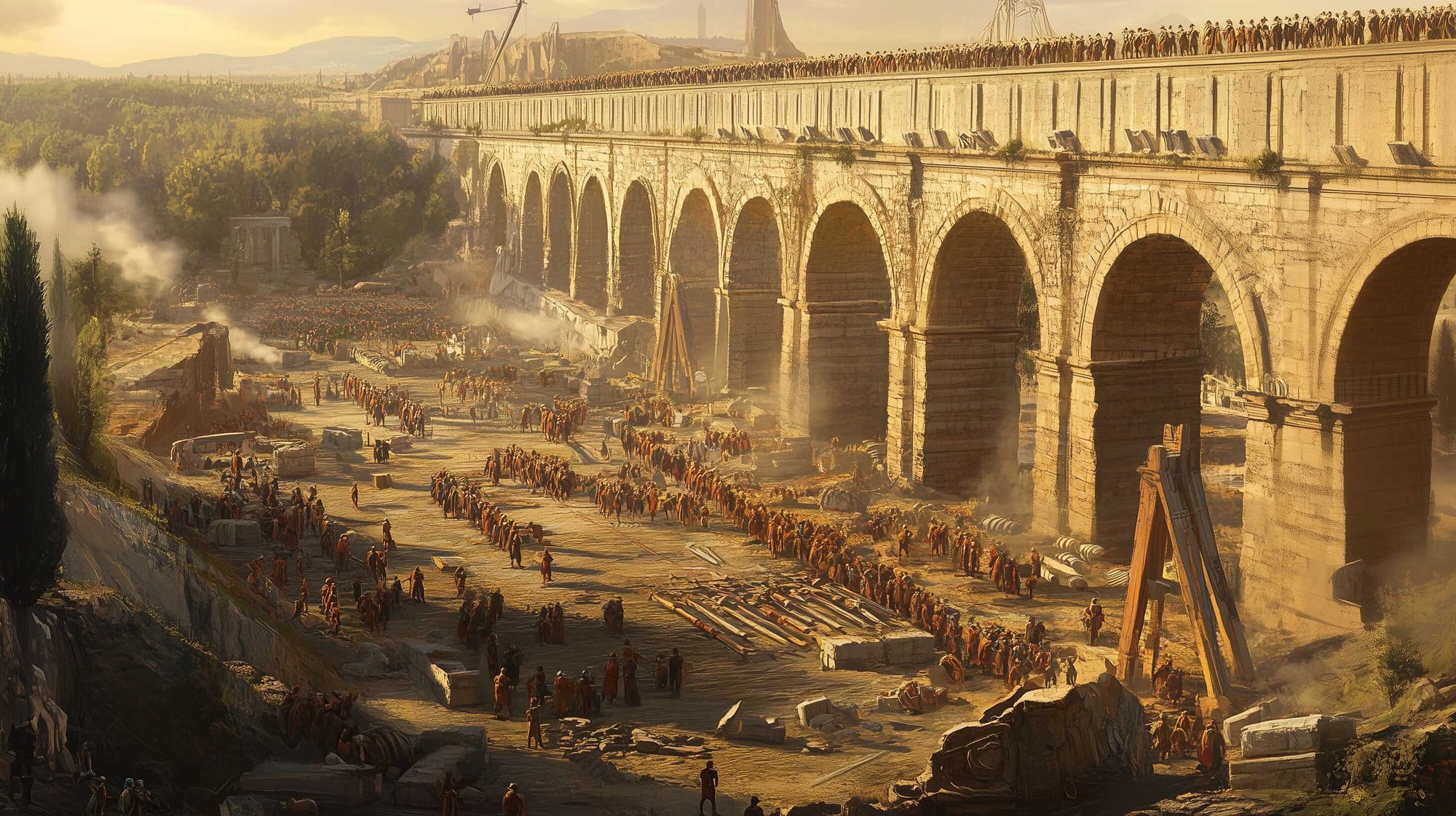
Iconic Aqueducts that Still Impress
- Pont du Gard, France: A masterpiece of ancient engineering, the Pont du Gard was built in the first century CE to supply water to Nimes. It is one of the highest and best-preserved Roman aqueducts.
- Aqua Virgo, Rome: Integral to Rome's water system since 19 BCE, the Aqua Virgo fed the famous Trevi Fountain and remains operational today.
- Aqua Alexandrina, Rome: Constructed between 208 and 235 CE, this aqueduct supplied water to the Baths of Alexander and showcases the ambition of Roman engineering.
- Aqua Claudia, Rome: Known for its length and supply capacity, the Aqua Claudia's remnants are visible in Rome's Parco Degli Acquedotti.
- Valens Aqueduct, Istanbul: This two-tiered construction served as a key water source for the Byzantine and Ottoman Empires, illustrating the extensive reach of Roman engineering.



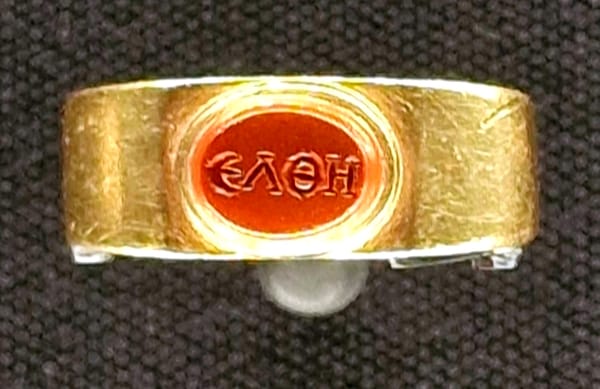
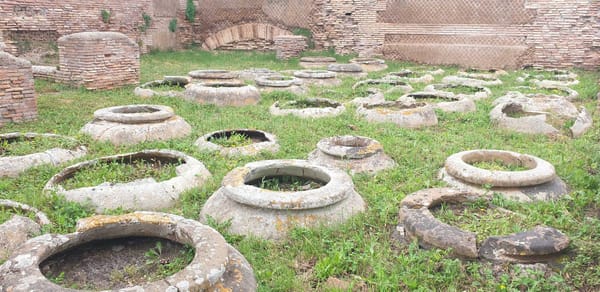
About the Roman Empire Times
See all the latest news for the Roman Empire, ancient Roman historical facts, anecdotes from Roman Times and stories from the Empire at romanempiretimes.com. Contact our newsroom to report an update or send your story, photos and videos. Follow RET on Google News, Flipboard and subscribe here to our daily email.
Follow the Roman Empire Times on social media: